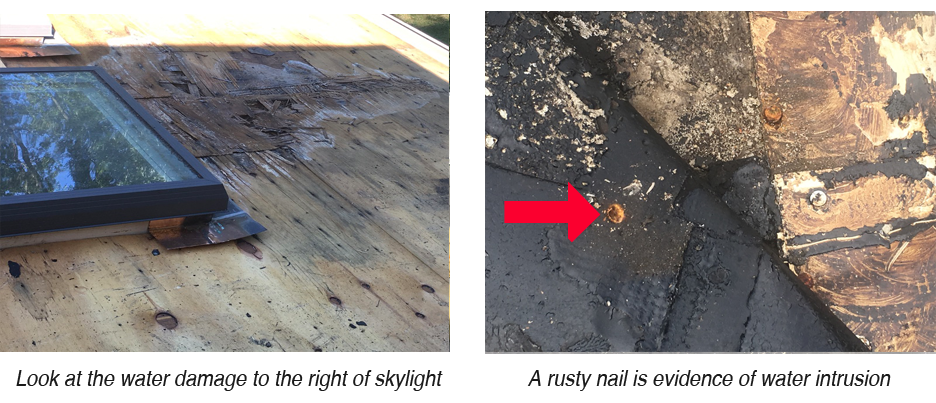06 Apr
The Art Of Finding A Leak
Have you had a leak that no one can seem to find, that has been repaired, and repaired, but still shows up? Your roofer won’t come back anymore, or blames it on something else? This is very common; we hear this story all too often.
Unfortunately, most roofers shoot at the obvious target, without diagnosis or without addressing surrounding areas that have leak-potential. Whether we are specifying a full roof replacement or targeting an active leak, the approach and philosophy is to “control” all areas that have leak-potential. This could include windows, walls, skylights, chimneys, gutter systems, Etc. If you address and control all items in the leak area, and execute the specified work correctly, you will stop the leak.
A number of years ago, we were asked by a high-end builder we worked for in Huntington to please look at his sister’s roof in Woodbury. The house was about 8 years old and since it was built, they had experienced an intermittent, but chronic leak in the downstairs kitchen. When I was greeted at the front door her first comment was, “here is another roofer come to take my money and not fix my roof.” She than proceeded to explain to me that the flat roof above the leak and the adjoining masonry wall had been replaced and refurbished 2 times at a cost of over $ 20,000. I explained that I was not there to fix the leak, but rather to find it. I asked her to put on a pot of coffee and I proceeded to remove a 2’ x 2’ section of damaged sheet rock where the leak was showing up in her kitchen. I then set up a sprinkler on the roof to hit the wall and flat roof directly over the effected area. After 30 minutes and two cups of coffee, with good visual access to the inside framing of the area -NO Leak. I went on the roof and moved the sprinkle about 10 feet south of the where the leak was showing up and began hitting the part of the wall that had a window. Within 30 seconds, there was a steady stream of water coming into the kitchen. Upon close inspection, I could see that the water was following a thin wire coming from the direction of where I moved the water test. We went upstairs to the bedroom window and discovered that when the alarm sensor was installed, the technician drilled through the window on an angle, and set an alarm plug, but left a ¼” half moon hole. I removed the plug, pumped about .25c worth of silicone into the hole and reset the plug, and retested. Problem solved!! $50.00 an hour for water test and .25c worth of silicon, for a total cost of ($150.25)
Water testing is a great way to diagnose a leak before you start throwing money at it. You can apply water in a controlled manor to prove or disprove the areas with leak potential.

“Water leaves clues.” If you follow the trail, it will lead you to the leak. Another time we were called in to fix a leaking skylight in the Plainview area, and again, there were multiple attempts to fix this problem with no success. The water stain was showing up at the top of the skylight frame, which is not typical, so we began looking uphill on the roof to see if there was a possible area that could be a problem. At first inspection, nothing jumped out at us. No penetrations, no walls, no valleys, no obvious suspects. With this we began to remove some shingles above the skylight and disclosed wet felt paper and rusty nails. We went further up hill and found more of the same. We were 8’ up the roof before we stopped seeing evidence of water. What we found was simple, a single roof nail installed in the seam of an overlapping shingle that had eventually rusted away and allowed water to get under the field of the roof. This water traveled down hill between the roof felt and the back of the shingles until it reached the skylight. Where water comes into the building is not always directly where it is getting through the roof.
In close: If you are specifying a new roof or repairing an existing one, it is crucial that you control all items that have potential for water intrusion. If you only address the obvious items and or omit certain ones, you should expect that more times than not, water intrusion would occur.


Sorry, the comment form is closed at this time.